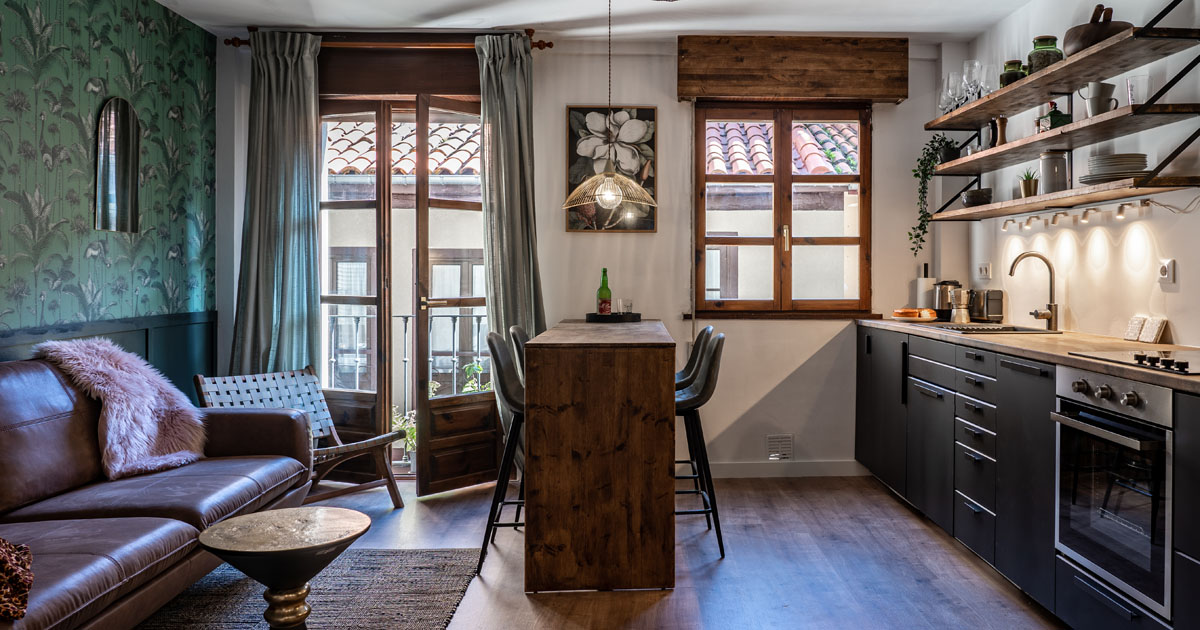About the right lighting concept
Good lighting is one of the most important aspects of a living space. However, “lighting” is often reduced to choosing nice-looking lamps, and the “lighting design” only takes place once the rest of the apartment is furnished, which means that we often live in a poorly lit apartment for months or even years.
A big mistake! Read on and you’ll understand what we mean.
Three options for lighting a living space
General lighting
Usually mounted from above, somewhere in the middle of the ceiling. It provides uniform light in a room and allows you to move around safely.
Workplace lighting
It helps you to complete certain tasks in this room.
Accent lighting
It adds visual interest to a room, e.g. it can highlight a painting or a beautiful, textured wall. It can also serve as a “mood light”.
Ideally, you should use all three types of lighting in each room (provided it is large enough) to create a perfect “multi-layered” concept. Think about the (potential) functions of each room and what “feeling” the room should convey at different times of the day.
If you need professional support in planning your lighting concept, then Nine44 is the right address for you. Contact us without obligation.
Lighting options for different rooms
Kitchen lighting
- Work lights under the cupboards/shelves are a must. They are very useful for illuminating the work surface while you are cooking – they can also be dimmable, helping to create a pleasant atmosphere when you are not working.
- If you have a bar or a kitchen island, you can hang pendant lights (one or more, depending on the size) above it – voilá, functional and decorative.
Bedroom lighting
- Install a nice pendant light as an eye-catcher (if the ceiling is high enough), and you have a nice light source that is sufficient for general tasks (folding laundry, tidying up…)
- Bedside lamps: Make sure they are strong enough so that you can read and the other person can sleep at the same time.
- Wall lights are a trend that we really like. Not only do they look great, but your bedside table is free for other things.
Living room lighting
- You can use a general luminaire that can be very decorative and reflect the style of the room.
- Since the living room is usually the center of activity, we want to make sure that this room is well lit for reading, watching TV, entertaining, etc. There are so many possibilities: How about accent lighting in the form of a floor lamp with a texture that casts beautiful patterned shadows on the walls? A floor lamp next to an armchair is the perfect task lighting for reading. And a few candles lit at the right moment create the right atmosphere for a lovely evening.
Bathroom lighting
- Apart from general light sources that don’t dazzle you when you go to the bathroom at night, you should install lighting on both sides of the mirror. This gives you light for the actual work (make-up, shaving…) without causing shadows.
- If you’re one of the lucky ones who has a bathtub… set up candles or another soft, accenting light.
Further tips for planning your lighting concept
- Ideally, a good lighting plan should be drawn up before a new house is built or a major renovation is carried out. However, there are also good ways to improve the existing lighting.
- Don’t forget that lighting fixtures play an important role in setting the tone or mood of a room. Therefore, choose luminaires in a style that appeals to you and suits the room.
- Pay attention to the proportions: An impressive industrial pendant light above a small dining table would make the room look unbalanced.
- The colour temperature also plays a role! Who wants a house that looks like a dentist’s office? As a rule of thumb, you can say that warm light is yellow and cool light is blue. More precisely, the color temperature is measured in Kelvin (K), and the higher the temperature, the cooler the light. Warm light is perfect for rooms where we want to feel comfortable, while cool light is recommended for areas where we want to see clearly (e.g. at a desk).
The latest interior blog posts
- All contributions
- Interior Design
- Space planning



